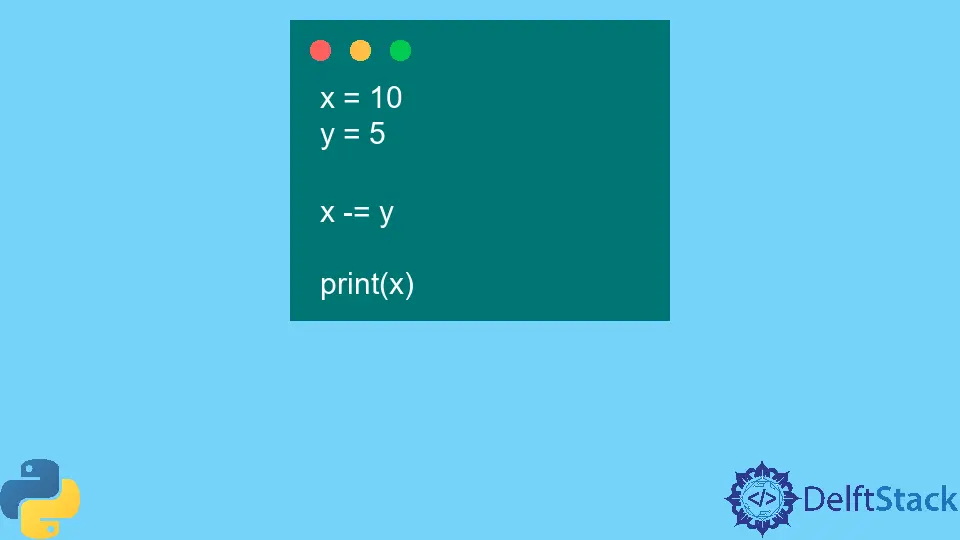Python 中的賦值運算子
Lakshay Kapoor
2021年10月2日

程式設計中有很多時候我們必須為各種變數賦值。在 Python 中,有不同的賦值運算子來完成這些型別的任務。你可以在 Python 中使用兩種型別的賦值運算子:簡單賦值運算子(如 =)和複合賦值運算子(如 += 和 -=)。
本教程將介紹什麼是 -= 賦值運算子在 Python 中。
Python 中的 -= 運算子
-= 運算子是 Python 中的遞減賦值運算子。它從左側的運算子中減去右側的運算元,最後將所得差值分配給左側的運算元。
因此,我們可以說 c -= 10 類似於 c = c - 10。
現在讓我們看看如何在 Python 中使用 -= 運算子。
x = 10
y = 5
x -= y
print(x)
輸出:
5
這裡,x -= y 語句的意思是 x = x - y,即 x = 10 - 5,等於 5。
就像 -= 運算子一樣,有許多不同型別的複合賦值運算子,例如 +=、*=、/=、&= 和 |= 有助於執行所有操作算術運算、布林運算等的基本型別。
作者: Lakshay Kapoor
Lakshay Kapoor is a final year B.Tech Computer Science student at Amity University Noida. He is familiar with programming languages and their real-world applications (Python/R/C++). Deeply interested in the area of Data Sciences and Machine Learning.
LinkedIn